I am about to start a new campaign, and I will be running Castles & Crusades again. Several friends have asked me to write a review and discuss why I love the system so much. To do so I will present a brief history of the game, describe the system as presented in the core rules (the Player’s Handbook and Monsters & Treasure), provide a brief comparison to 5e D&D, and finally finish off the review with a final evaluation. The core rules of C&C are comprised of 2 required tomes (the aforementioned PHB & M&T) and one optional 3rd reference tome (the Castle Keeper’s Guide). I speak here mostly about the rules and information in the PHB, but do mention other books published for the system. Castles and Crusades products are available in PDF on DriveThruRPG and in hard-copy via the Troll Lord Games webstore.
Briefly, in 1999 the Chenault brothers (Stephen & Davis Chenault), along with Mac Golden, formed Troll Lord Games and released a few generic fantasy adventures, several d20-based adventure modules, and a hefty setting book. In 2003, having grown tired of the d20 style, they produced and released a whole new game using the Open Gaming License. Thus was born C&C.
The game was really a response to the release of 3.x D&D and the glut of d20 Licensed products that were flooding the market. The flavor of the early generic and d20-based adventures produced by TLG caught the attention of Gary Gygax and they began working together – a relationship that was sustained until Gygax’s death in 2008. Sadly, after Gary’s death, all rights to his work and any products in development were revoked. As a result, Troll Lord Games has been unable to re-publish anything Gary worked on under their TLG banner. They are also barred from publishing any previously unpublished work that Gary produced or oversaw for TLG at any time. That is a topic for a different discussion and is beyond the scope of this review.
The style of C&C hearkens back to the days of 1e AD&D and early 2nd edition AD&D, rather than moving forward with the rules-heavy, rule-for-everything, system-mastery-is-king direction that 3rd edition D&D was going in. Even the initial format of C&C evoked nostalgia as it came in a small white box containing 3 digest-sized pamphlet-booklets. This new game evoked the look and tenor of the Original D&D Whitebox in a way that nothing really had up to that point in time – in presentation and play – and it received lots of attention. At this point the Old School movement (OSR; does the R stand for revolution, renaissance, or revival? I’ve never figured it out, but I digress…) was just a glimmer in the eyes of older D&D players.
For the record, C&C is not a true retro-clone because it only mimics the feel of the old school game, but not the rules of the old school game. Over the ten years since the initial white box release the game has been published in 8.5×11 and 6×9 formats, hardcover and softcover formats, black-and-white and color interior formats, digital and hardcopy formats, and has seen 6 printings of the hardcover Player’s Handbook. In that decade the rules have changed very little and first printing player’s handbooks are still compatible with 4th or 6th printing player’s handbooks at the same gaming table (the only significant changes are playtested expansions of the barbarian class and some tweaks to the illusionist and encumbrance rules). The look of the game has, however, progressed a great deal and the most recent printings look as professional as anything produced by the larger RPG companies that continue to dominate the industry (e.g. Wizards of the Coast and Paizo Publishing).
The Game
Task Resolution:
C&C uses a unified task resolution mechanic called the SEIGE Engine ™. This mechanic bases everything off of the six traditional fantasy RPG attributes – strength, dexterity, constitution, intelligence, wisdom, & charisma. Each character gets 2 attributes that are designated ‘primary’ and 4 attributes designated ‘secondary.’ Any task resolution that uses a PC’s prime attribute has a base difficulty of 12, but circumstances can add or subtract from that target number. Any task attempted which uses a PC’s secondary attribute has a base difficulty of 18 – again, circumstances can add or subtract from that target number. When a task is attempted, the player rolls 1d20, adds their attribute modifier and their level and tries to beat the target number.
There are a couple of nuances to the SIEGE mechanic – dealing with class abilities is perhaps the most important one. That is, when a PC attempts a task which is the class ability of a different class (e.g. disarming traps for the rogue or tracking for the ranger), the Castle Keeper (the name for a GM in C&C) has a choice to make. They can either 1) disallow the attempt, or 2) allow the attempt, but the roll is a d20 with only the attribute modifier added. That is, the PC’s level is not added to the roll. This is class niche protection codified into the rules. What do I mean? Well, it basically ensures that, even if any PC can attempt any action (which is how I usually run my games, rather than disallowing actions, which I find distasteful), only the PC with that skill/task/activity as a class ability will improve in that skill/task/activity as they rise in level. In other words, and this is an important concept, at low levels some PCs will be about equally able to succeed at certain tasks, but as levels go up the PCs who have specific tasks as class abilities will improve in their ability to resolve that task successfully. Meanwhile those PCs without that task as a class ability will remain with the same chance for success that they started the game with at level 1. It is a subtle, but surprisingly effective way to demonstrate class niche improvement throughout a campaign.
Character Classes:
C&C has 13 classes available: Assassin, Barbarian, Bard, Cleric, Druid, Fighter, Illusionist, Knight, Monk, Paladin, Ranger, Rogue, & Wizard. The classes are very AD&D-like in feel. They are traditional style fantasy classes which have special abilities related to the class itself. Also, which class is chosen by the player determines one of the primary attributes that PC has. The player chooses the other primary attribute, so there is still some leeway in character generation, and it is still possible to create two PCs of the same class which act and feel differently in the game due to different primes.
Class also determines how many hit dice (HD) a PC begins with. HD determine how many hit points a PC has at the beginning of the game and how many they gain each time they rise in level. A PC’s class also puts restrictions on the type of weapons and armor usable by the PC as well as the available alignments for the character. Melee and ranged attack rolls are affected by a base-to-hit number (BtH) which is determined by class (and level). And finally, how many experience points are needed to level up is also determined by the class of the PC. That is, C&C doesn’t have standard XP milestones which allow the PCs to level up all at the same time – instead, different classes need different amounts of XP to raise in level.
Here is a brief overview of the classes – these descriptions are not an exhaustive listing of the skills and abilities of each class, just a flavoring:
The assassin is a classical assassin with the ability to trace a target, hide for long periods of time, use disguise as a way to get closer to a target, and use poisons, to name a few. These stealthy characters have middle-range hit points (HD=d6) but are quick on their feet and deadly to any target they have studied.
The barbarian is a true rural/wilderness born hunter with primal instincts, rage, and the ability to intimidate. Their hardy nature provides them with high hit points (HD=d12) and they are tough to beat in melee.
The bard is a true knowledge hound who can decipher ancient or erudite scripts, weave a fascinating tale, and inspire their allies. They have high hit points (HD=d10) and can hold their own in a fight whilst spouting the lore of the lands.
The cleric is a devoted follower of divine power who can call upon their deity in times of need. They wield divine magic as easily as they handle a morningstar and they can strike fear into the undead, banishing them. Clerics have middle-range hit points (HD=d8) and have access to a wide variety of spells even at first level.
The druid is a true nature lover, steeped in natural lore, able to walk in the wilderness unseen, and adopt the shape of small animals. They have middle-range hit points (HD=d8) and are able to resist damage from the elements.
The fighter specializes in specific weapons, can make more attacks per round as they level up, and is the most consistently ferocious in melee. They have high hit points (HD=d10) and are the only characters allowed any weapon and armor combination.
The illusionist is a master of bending the mind’s eye into an altered reality. These arcane wielders have sharp senses and have their own spell lists. They have low hit points (HD=d4) but have access to powerful magics that deceive as well as heal.
The knight is a military style leader with a birthright and a code of conduct. They ride their war horse into battle, inspire their allies, and demoralize their enemies. They have high hit points (HD=d10) and follow the edicts of the knightly virtues almost without fail.
The monk is a true devotee of mind-over-matter. They train their bodies to be lethal weapons and their minds to protect them from any assault. They have high hit points (HD=d12) and though they can use weapons, they work well as no-weapon and no-armor combatants, in true monk style.
The paladin lives to smite evil, can cure disease at a touch, and must be lawful good. They have high hit points (HD=d10) and can cure the wounds of their allies with a hand a d a prayer.
The ranger knows how to survive in the wilderness, concealing themselves from enemies, and setting traps for foes. They have high hit points (HD=d10), can track their enemies, and study their most common foes well enough to have bonuses to attack and defense against favored enemies.
The rogue has traditional thief skills as class abilities and can hide in shadows, move silently, pick locks, find and disarm traps, and sneak up for the extra-damaging kill. They have middle-range hit points (HD=d6) but are deadly in a fight if they can find a hidey hole and wait for the right time to kidney-stab their opponents.
The wizard wields powerful arcane magic and can become the most formidable foe as they gain experience and power. They have low hit points (HD=d4) but their arcane abilities can protect them from even the most damaging of attacks.
Character Races:
C&C has 7 standard races available. Each race provides specific special abilities to the PC, with a few abilities available to more than one race (e.g. type of vision). Race also determines movement rate and provides bonuses or penalties to specific attributes. Some races have typical classes that they gravitate toward and that sometimes lead to extra bonuses when a specific race and class combination is used.
These races are very AD&D-like. For example, Dwarves don’t like Elves very much – in a very Lord of the Rings way. That is, the races tolerate each other if they find an individual useful and they can even develop friendships. The way the Player’s Handbook is written you get the idea that a party will do fine with a mixed bag of races, but entering a Dwarven mine with an all-Elf party might cause some issues. In short, the book makes it easy to rationalize a party of mixed-race PCs while still providing fodder for the CK to create tension or conflict in a specific region based on the race of the PCs.
Here is a brief overview of the races. This is by no means an exhaustive description of each racial trait or ability, just a flavoring:
Dwarves are hardy, gruff individuals with a flair for good craftsmanship, a nice shiny gem, and an impeccable code of honor. They don’t fancy elves very much, can see in the dark, determine depth and direction underground, resist fear, poison, and arcane magic, and know a ton about stonecraft.
Elves are extremely long-lived, usually pale and skinny, and have pointed ears. They are often perceived as intolerant and arrogant. Elves have excellent senses (vision and hearing), can move silently in the wilderness, and can see very well under moonlight or starlight conditions.
Gnomes are confirmed pranksters, love the outdoors, can see in the dark, and have excellent hearing. They have innate spell-casting ability and can communicate with small mammals.
Half-Elves choose either human or elf as their primary lineage, allowing 2 half-elves to be rather different in abilities. Regardless of lineage they have an easy time spotting hidden doors and, due to never really fitting in, have an amazing ability to empathize with others.
Halflings are short, friendly, and fearless. They are able to hide and move quietly in the wilderness and their hardy bodies are resistant to the ills of the outdoors.
Half-Orcs are brutal and unsavory creatures who can see in the dark, have an enhanced sense of smell, and resist disease. Their violent nature makes them excellent fighters and they are found almost anywhere in the world.
Humans are relatively short lived, competitive creatures who lack empathy for other races. They are ambitious and can be found in all climates of the world. Being so adaptable provides them with no specialized abilities, but they do get to choose one extra ability score to designate as prime for that PC. That means that human PCs have 3 primes, which is a really sneaky, but enticing, way to encourage humans as the dominant race in the game – a very Gygax inspired AD&D style outlook.
Character Alignment:
The game uses the traditional 9 alignment system of 1e AD&D. This concept includes lawful good, lawful neutral, lawful evil, neutral good, neutral, neutral evil, chaotic good, chaotic neutral, and chaotic evil. A few pages are spent discussing the ins and outs of the different alignments and stresses that there is a ton of room for interpretation between the different categories. This is a theme embraced throughout the Player’s Handbook and the system in general – the rules, and aspects of the rules, are for guidance and interpretation by the CK and their gaming group.
Leveling Up:
The Player’s Handbook takes characters from level 1 through level 12, with guidance on what changes to apply at higher levels. If a CK wants to run a game for heroic characters of levels 13-20, they can invest in the Castle Keeper’s Guide which has a ton of practical advice, charts, and tables on how to adjust your game to fit the needs of the group. This includes higher level play.
Saving Throws:
Saving throws are handled just like other task resolution situations in the game. That is, the affected PC makes a SIEGE check to avoid any u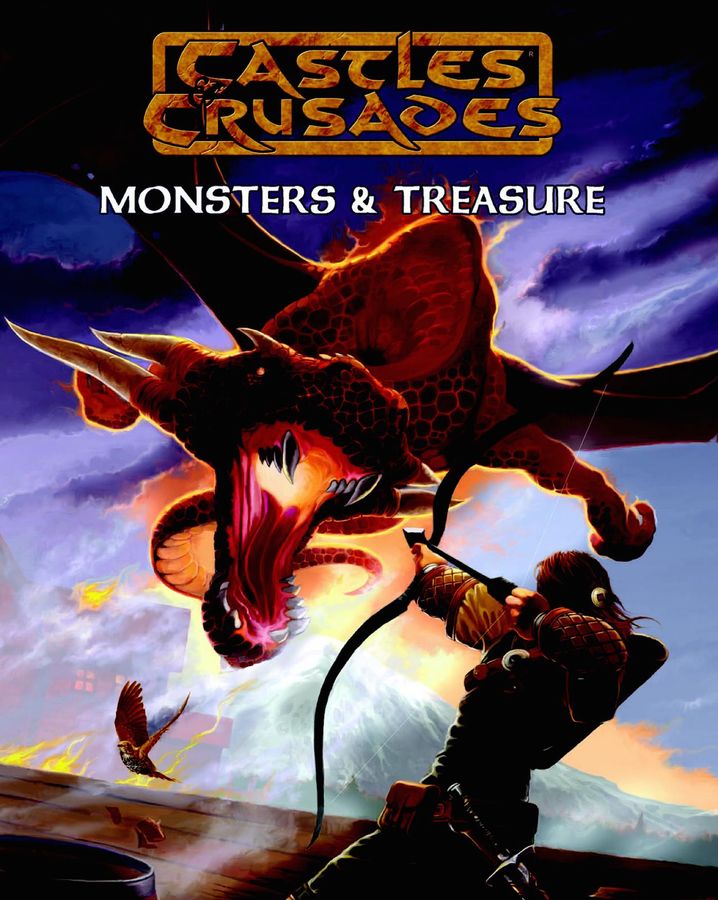 nwanted damage, alteration, or harm caused by a creature’s special ability. Basically, just as when the PC is attempting a task, the player of that PC rolls a d20 + attribute modifier + level and tries to meet or exceed the target number determined by the CK. The target number is either 12 (if the attribute is prime) or 18 (if the attribute is secondary). The target number is possibly modified by the spellcasting level of the opponent, the HD of the creature attacking, the level of the trap or poison, or any other circumstantial bonus or penalty the CK deems appropriate to the situation.
nwanted damage, alteration, or harm caused by a creature’s special ability. Basically, just as when the PC is attempting a task, the player of that PC rolls a d20 + attribute modifier + level and tries to meet or exceed the target number determined by the CK. The target number is either 12 (if the attribute is prime) or 18 (if the attribute is secondary). The target number is possibly modified by the spellcasting level of the opponent, the HD of the creature attacking, the level of the trap or poison, or any other circumstantial bonus or penalty the CK deems appropriate to the situation.
Basically, every attribute has a set of related conditions for which that attribute is used for the saving throw. Strength is used when saving versus paralysis and constriction. Intelligence is used when saving versus arcane magic and illusions. Wisdom is used when saving against divine magic, confusion, gaze attacks, polymorph, and petrification. Dexterity is used to save against breath weapons and traps. Constitution is used versus disease, energy/level drain, and poisons. Charisma is used versus death attack, charm, and fear affects. Spells also may have specific saving throws required (other than intelligence) given the circumstances. For example, the spell Gust of Wind can be negated with a strength save, not an intelligence save, even though it is arcane magic.
Magic System:
Arcane spells (those cast by wizards and illusionists) are written into a spellbook and carried around by the PC. Arcane casters have a set number of spell slots they can prepare spells into each day. In the traditional 1e AD&D fashion, they prepare the spells in the morning and can use them during the day, but only once per spell slot. The level of the arcane caster determines how many and which level spell slots are available to a given PC. A character can put the same spell in more than one slot so as to cast the same spell more than once per day.
Arcane spells are vancian in nature – that is, they work as so-called fire and forget type of spells. Once the caster has cast the spell out of its prepared spell slot the arcane energy is expended and the spell is no longer in the mind of the caster. Once they prepare the spell again, the energy will be stored in the caster’s mind and the PC can cast it again. Arcane casters start with a specific number of spells in their spell book. In order to add to their spellbook the caster mist either find a spell scroll and copy into their book, learn a new spell from a different arcane caster, find another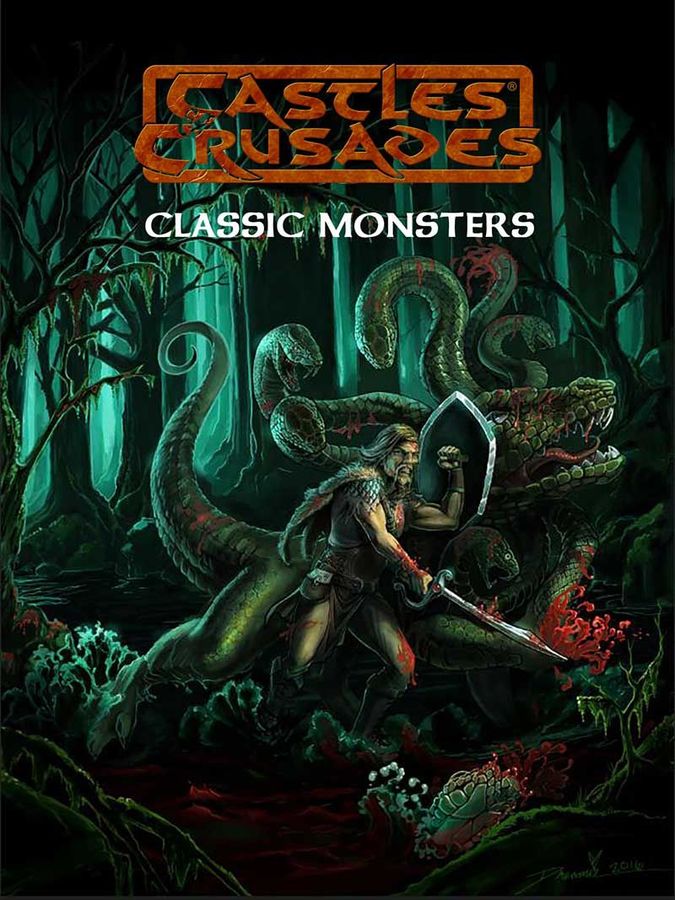 caster’s abandoned/lost spellbook, or research the generation or a spell of their own creation using an arcane laboratory and enough time.
caster’s abandoned/lost spellbook, or research the generation or a spell of their own creation using an arcane laboratory and enough time.
Divine spells (those cast by clerics and druids) are not written into a physical book, but instead are prayed/meditated for each morning during the character’s normal morning routine. Each divine caster has a specific number of slots they can prepare, much like an arcane caster, and the spell is lost once it has been cast.
The main difference between arcane and divine casters is that the divine caster has all of the spells of the appropriate levels available to them when they are preparing. They are not bound by a list of what is found in a spellbook. They can pray/meditate to receive any spell on the lists in the book.
Spells in the game have some combination of verbal, somatic, and material components necessary for the casting. The extent to which a PC is required to manage their material components is up to the CK. Spells with somatic (gesturing) and verbal (speaking) components require that the caster be uninhibited in their movement or speech, respectively, to complete the casting. Casters begin casting spells at the beginning of the round and the spell’s energy is released during the PC’s turn in initiative that round (or a subsequent round if the spell takes more than one round to cast). If the PC is hurt or otherwise interrupted before the spell’s energy is released, they must succeed at a constitution save or lose the spell.
Spells in C&C include some of the most iconic spells known to D&D players. Spells such as knock, bless, magic mouth, cure light wounds, shield, sleep, and other consistent fantasy trope satisfying spells are there. Other, more powerful spells, such as summon monster, maze, wish, gate, and power word kill are also there. Spells which traditionally had a ‘name’ attached to them are also in evidence, though the name has been removed. For example, Tiny Hut (nee Leomund’s Tiny Hut), Acid Arrow (nee Melf’s Acid Arrow), and Floating Disc (nee Tenser’s Floating Disc), to name just a few.
Combat
Initiative:
Initiative in C&C is very basic. Each round a d10 is rolled for each PC and for each major group of monsters. Since each PC and each group of creatures rolls initiative each round, the combat stays dynamic and changes order frequently. The offshoot of this is that it is entirely possible for a creature to act twice in a row (if they were last in one round and first in the next round, for example). One special case occurs if a creature is using an extra-long polearm type weapon… if so they get to act first in the first round of combat, provided they are not surprised.
Actions in Combat:
Combat rounds are 10 seconds long. In combat you have a choice of several actions to take, but you only get one action per round:
a) Attack: If you make a melee or ranged attack. If you choose to attack, you can also move up to half your speed in the round.
b) Move: You can walk (move your speed), Jog (move 2x your speed), or Run (move 4x your speed).
c) Get an Item from a Stored Location: It takes a round to dig something out of a bag or backpack.
d) Use an Item: Use an item in your hand or easily accessible from a belt or small pocket. This includes
drinking a potion, reading a scroll, or working a piece of equipment or machinery.
e) Use an Ability: Use/Activate a class ability.
f) Cast a spell: Cast a divine or arcane spell.
g) Perform a Creative Ad Hoc Action: Attempt to perform an action that is not explicitly listed on your
character sheet.
h) Perform a Special Combat Maneuver: Some special combat actions are available to attempt in the
midst of combat. These include disengaging, evading, disarm, dodge, flank, and charge.
i) Perform an Unarmed Combat Maneuver: Unarmed combat has a couple of specific rules, but is run basically the same as melee combat with some slight adjustments to AC and grapple/restraint interactions.
Defenses:
Armor Class is ascending (higher value = better protection) and depends on the type of armor worn and is modified by the dexterity of the PC.
Maps:
The game does not assume that the group is going to be playing with miniatures and battle maps. There are enough details provided that the gamecould be played with detailed maps for each battle. However, combat is meant to be quick and fluid and having a battle map doesn’t usually lend to that speedy play. In my opinion, the game is best played somewhere in the middle of pure theater-of-the-mind and full-on battle map with 1 inch squares. That is, a quick, non-scaled, map of the area can be sketched and put on the table for the players to use as a general reference of positioning.
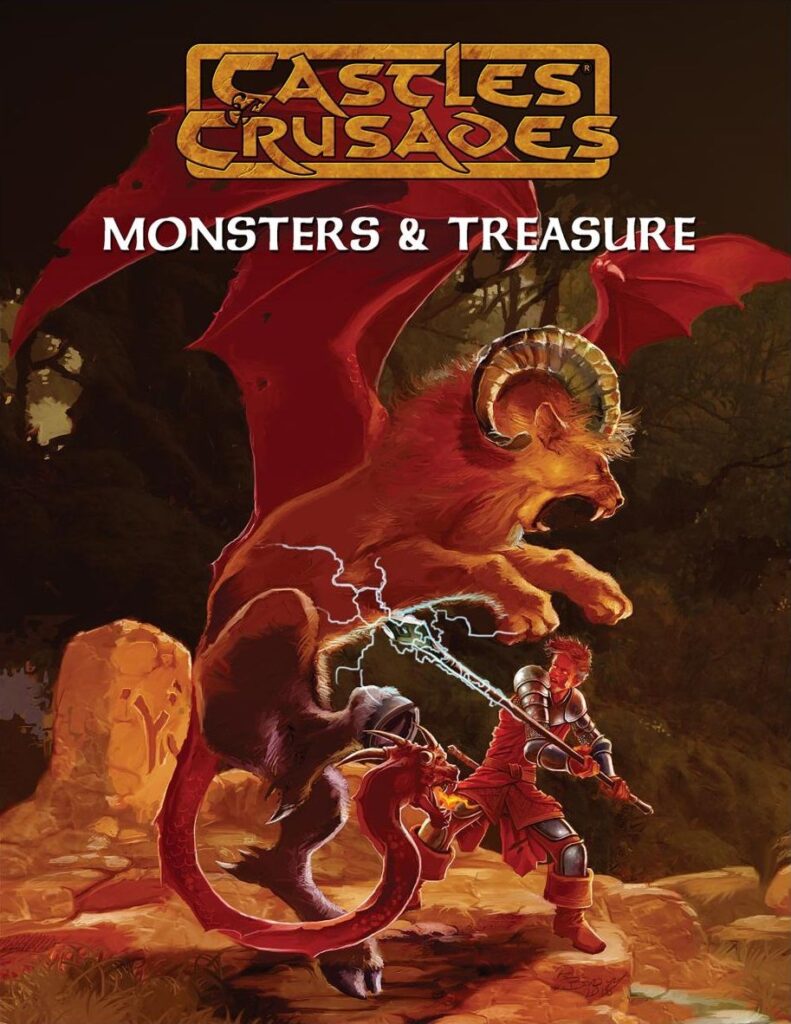 Hit Points, Death, and Healing:
Hit Points, Death, and Healing:
Hit points are determined by rolling a PC’s HD (size of die is based on class) and adding their constitution modifier. Each time that the PC levels up they gain another hit die, roll it, and add their con modifier. During the game, when a PC’s HP falls between 0 and -6 the PC is unconscious and can take no actions. When the PC gets to -7 the character is grievously wounded and will lose 1 HP per round unless the wounds are tended by an ally. At -10 HP the PC is dead.
Provided the PC is at 0 or above and gets full rest and good meals in a safe place for 24 hours, they will heal naturally at the rate or 1 HP per day. After 7 days of rest the PC will heal 1 HP + constitution modifier per day. After 14 days the healing doubles. After 30 days the natural healing rate triples. This rate of healing can be accelerated by herbal treatments or natural salves if the CK deems the treatment appropriate. Magical healing takes effect immediately.
Experience:
The Player’s Handbook provides for many ways to reward the PCs with experience (xp). Generally the CK is left to decide which aspects of game play are rewarded. Slaying and/or defeating monsters is the only category in which the CK is directly instructed to give xp. The party doesn’t have to slaughter the creatures to get the xp, they simply have to defeat them in some substantial way. That defeat can come in the form of trickery, evasion, or by subduing the creatures. Each of those makes the PCs eligible for the full xp value provided by the monsters.
Other suggested sources of xp for the party are discussed in the rules. CKs can award xp for the coinage, valuable gems, and magical items that the party obtains during an adventure. This is another of the things in C&C that evoke the early days of D&D. Role playing is another rewardable activity. That is, if a player comes up with exciting and creative activities and responses for their PC, they could be rewarded for that with xp. Story arc completion is another avenue for rewarding PCs; the CK can choose to provide the party with a specific amount of xp based on the completion of specific pieces of the story. Once a PC has acquired enough xp they will gain a level, increasing their chances of successfully completing tasks and gaining the use of class abilities.
Running the Game
All of that sounds like pretty standard fantasy RPG fare, but how does the game run at the table? The game runs very smoothly. The rules get out of the way at the table. They aren’t so cumbersome and numerous that the players are constantly looking at their PHB during the game.
Determining Task Difficulty:
When someone wants their PC to attempt a task it is very easy for the CK to determine the difficulty and have the player roll a SIEGE check. Determining the target number for an ad hoc action is very simple and can be done on the fly at the table. The target number is the sum of two pieces of information: the base and the challenge level. The base is either 12 or 18, depending upon whether the associated attribute is primary or secondary for the PC. The challenge level of the task is easy to determine based on the situation. If the challenge is from a creature, then the creature’s HD is the challenge level. If the challenge is from an NPC, then the challenge level is the NPC’s level. If the challenge is a spell effect or trap, then the level of the effect is the challenge level. Usually a challenge level of 1-5 makes for an easy task, 6-10 is difficult, 11-15 is very difficult, and 16-20 heroically difficult. The terminology used to describe this is Challenge Base + Challenge Level = Challenge Class. The challenge class is the target number the PC must beat on their d20 roll. As in all other SIEGE checks, the PC adds their attribute modifier and their level to the roll.
Skill System:
There is no skill system. Any possible task can be evaluated using the SIEGE engine and resolved using a SIEGE check. No lengthy or complex skill trees need to be involved. Players are not restricted by what is on their PC’s character sheet. They can attempt anything, even if there is no skill system hanging around to complicate the adjudication of an attempted action. This is a free-form way to play and it works very well provided you have a CK that communicates well and lets the players attempt creative and unforeseen actions.
PC Feats:
There are no feats available to PCs. There are no major boosts to power brought on by incremental gathering of special features that kick in during certain situations or circumstances.
Creature Statistics:
Creature entries in the Monsters & Treasure core book are easy to read and the stat blocks are short and to the point. The only thing the CK needs to know is the HD, the save type, and any special attacks/abilities the creature may possess. During combat the creature’s HD is their attack bonus, so a 5 HD creature rolls d20+5 to attack.
Each monster has either physical, mental, or no primes. A creature with physical primes treats the saving throws for strength, dexterity, and constitution as a base 12 target number and adds their HD to the roll as a modifier, similar to PCs adding their modifier and level to their saves. A creature with mental primes treats the saving throws for intelligence, wisdom, and charisma as a base 12 target number and adds their HD to the roll as a modifier, similar to PCs adding their modifier and level to their saves. A creature with physical primes has a base of 18 for mental attribute saving throws and a creature with mental primes has a base 18 for physical attribute saving throws. A creature with no primes rolls all saving throws with a base of 18.
The Monsters & Treasure book contains most of the iconic D&D creatures which are not considered product identity by the owners of the D&D copyright (e.g. TLG, and anyone else creating a product, is not able to use Beholders because they are protected by copyright). Similar to other companies, even on the creatures that are owned by Wizards of the Coast, Troll Lord Games has come up with replacements that rival the originals and it is easy to see the lineage of such beasts. For C&C the Prysmal Eye (a.k.a. nonocculus) is a gruesome and dangerous beast which fills the niche left by the absence of the beholder (see page 93-94 of the M&T book for stats). Don’t fret for the old standards though, they are here as well. Creatures such as the quasit, rakshasa, manticore, skeleton, werewolf, giant, satyr, spider, snake, kobold, goblin, orc, and many dragons are all here! They are, of course, slightly tweaked and have their own special TLG flavor, but they are your standard fantasy foe with stats to match the C&C engine.
Game System Support
As each year comes and goes, the catalog of C&C products released by TLG grows and grows.
Adventures:
There is an adventure path in print (the A – Aufstrag Series) that takes characters from 1st level to beyond 12th level. There are also several adventures written for the Haunted Highlands regional setting. Several stand-alone adventures are in print for the C&C game as well. In fact, there is no shortage of adventures for a variety of levels. The TLG brand was built on adventures and they continue to create adventures to support the game as a matter of course.
Setting:
The main setting of C&C is Aihrde. A reprint, re-working, and expansion has recently been successfully kickstarted. This will bring the setting guide up to the same color and presentation standards that the core books have been given this year (2014-2015) and it will be a welcome cap to that endeavor. Several books and products were also printed in the early 2000s in support of Gary Gygax’s Castle Zagyg setting (a re-work and re-release of his original Castle Greyhawk setting). Unfortunately those books are out of print and expensive when found. The Haunted Highlands has become a setting in its own right and has a player’s guide and CK’s guide for that region of the world of Aihrde.



Supplemental Books:
C&C has also had several supplements that expand the game a great deal. The Codex Celtarum: Celtic Adventure in Faery brings celtic myths and new character options into the game. Codex Nordica does a similar thing with Nordic themes. Rune Lore introduces a new type of magic to the game. The The Book Of Familiars (C&C) is a fantastic supplement that offers new rules that open up the possibility of familiars to every class in a meaningful way. Of Gods & Monsters (written by the venerable James M. Ward, author of the original 1e AD&D Deities & Demigods) looks at the pantheons of various races and groups in the game and ports some real world mythological expression into the C&C universe. A second monster book was also released (Monsters & Treasure of Aihrde). It contains a variety of special items and creatures that have history and ecology directly connected to the TLG game setting.
Conversion of Other Systems’ Materials:
One of the biggest advantages of C&C is that it is very easy to convert a variety of formats for use with the SIEGE engine. C&C has been called the Rosetta Stone of RPGs because it is easier to convert material to C&C than any other fantasy RPG. 1e and 2e AD&D can be used with C&C with only the slightest conversion of descending AC into the appropriate ascending AC value. This is very simple: subtract the descending AC from 20 to get the ascending AC value – for example, an AD&D creature with an AC of 6 in the descending system has an AC of 20-6=14 in the ascending AC system. Yes, it’s that simple. The rules are so easy and free-flowing that almost all special powers and actions can be ported over to the game whole cloth.
Comparison to 5e D&D:
5e D&D has recently stepped into a similar niche as the one occupied by C&C. They both attempt to present streamlined systems that hearken back to the older AD&D style of play. 5e has many of the elements I mentioned about C&C in this review. 5e has brought D&D back into the house-rule-able style of gaming that C&C has been filling for the past decade.
However, there are some major differences. 5e is more balanced in terms of character power levels and advancement and it feels less like AD&D than C&C does. 5e has a codified skill system and a codified feat system. Though the 5e skills and feats are streamlined, they are ripe for exploitation in later splat books (especially feats). C&C has been out and supported for a decade and has exhibited almost no rules expansion or power bloat. The 5e D&D advantage/disadvantage mechanic allows for the dropping the +2 bonus bloat/paralysis that plagued 3.x versions of the game. C&C streamlined that nickel and dime +2 modifier approach a decade ago. 5e has now sat down next to C&C and taken up the rest of the space in the niche that C&C was in alone.
5e produces PCs that are way more powerful than comparable level C&C PCs. 5e also has characters rise in level all at the same time while C&C PCs rise at different rates. 5e feels like a modern game that will play like a modern game while evoking some feelings of nostalgia for the excitement of the early days of AD&D. C&C feels like a modern game (and reads like a modern game) but plays like AD&D. Some will find that very enticing while others will find it antiquated and too simple.
Short Summary
1) C&C truly does feel a lot like AD&D before bloat and rules minutiae enveloped the game. Remember gaming with just the 1e PHB and MM? That is what C&C gaming feels like, but the books have modern layout and design and are written for the modern RPGer.
2) It is explicit in the rules of C&C that the CK is the one who runs the game and the rules are a guide, not a master. Everything in the game is up for house-rule or excision if it doesn’t fit the group sitting at your table. This is quite different from the direction 3e went in describing rules for everything. Given the fact that C&C came out shortly after the release of 3e D&D (C&C is a decade old), you can see that it was a response to 3e’s heavy rulesmanship and reliance on system mastery.
3) Every action attempted in the game is tied to attribute checks (SIEGE checks) and everyone knows their base chance of succeeding because of the 12/18 prime/secondary mechanic (the SIEGE engine). Static bonuses are rare and pretty explicit (e.g. cover grants static bonus to AC, level of spell caster adds to save DC of spell).
4) C&C runs light and fast during combat, but each class gets special abilities that allow them to feel different.
5) No rule-heavy feats that require specific circumstances to trigger are baked into the game. Lack of these speeds play during combat considerably.
6) It is easy to run! The SIEGE Engine allows for really quick on-the-fly adjudication and yet each PC still may have a harder or easier time at a given task or saving throw. Their difficulty is related to the character’s attributes. This allows PCs to cover different niches very well.
7) The power level of the PCs rises with each level they gain, but even a 15th level fighter can have a high chance of failing a save versus a mid-level wizard spell. This means that the game stays dangerous even at high levels.
8) Every pre-3e/retro-clone/old school module/adventure is very easy to run as-is by 1) using the C&C versions of creatures, or 2) translating AC from descending into ascending. Save vs death/poison effects will also have to be reviewed since some saves don’t get much easier as the PC levels (or, I should say, don’t get as easy as they did in AD&D as the PC levels up).
9) Post 3e modules are also relatively easy depending on how many specialized creatures are in the adventure. Saves and special abilities would have to be looked at. AC and HD would need slight conversions for new school monsters. Still, you can basically use any adventure from any fantasy system with C&C without very much conversion at all.
10) Having no skill system and no feats could be seen as a loss for some players. On the other hand, if your players are starting to feel like learning and remembering all of the special conditions and restrictions for their skill and/or feat use is getting to be a drag, this may be the direction to go.
11) Grid-based combat is not essential to the game. There are no rules supplied for tactical miniatures use in the game. C&C does not rely on maps and token to play.
12) The rules are flexible and amenable to copious house-ruling if you so choose. They are also strong enough to be played as written with little to no house-rules applied.
(Image from page 56 of the C&C players Handbook, 6th printing)
Final Verdict
C&C is a smooth, fast playing, eloquently designed system that feels like AD&D at the table but was written with a modern audience in mind. The game has lots of support and new products come out frequently. The new printings of the core books really bring the look of the game into the current decade and solidify C&C as a system to be reckoned with. WotC has taken D&D through 2 and a half editions since C&C first came out (and C&C remains basically the same). C&C is a stable system that is here to stay. It doesn’t get as much attention as it did in the early 2000s, but it is still here, chugging along, making gamers happy.
I really love this game. It has a simple elegance that really takes me back to my roots of BECMI and AD&D 1e. But it also feels modern, not like a retroclone or throwback. It uses the d20 in a unified mechanic that I grasp intuitively and is easy to deal with on the fly without having to consult table after table in a rulebook. I can pick up any of my 1e modules or settings and use them pretty much as written, changing AC on the fly and experiencing those old-guard adventures with a modern system.
If you made it this far, thanks for reading my review – I hope it was a helpful and enjoyable read.
What did I leave out? What do you really want to know about this game that I didn’t mention?
Until Next Time, I wish you good gaming!
~DMSamuel


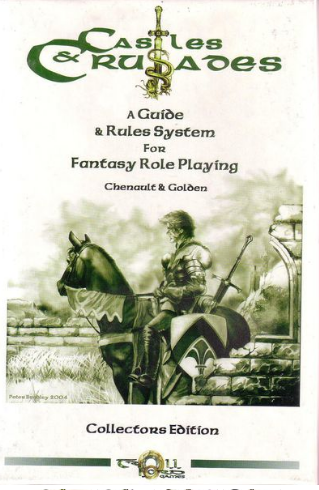
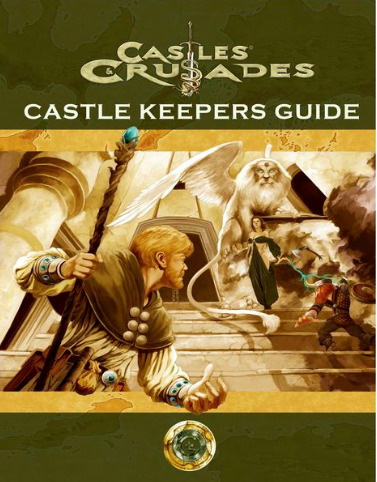
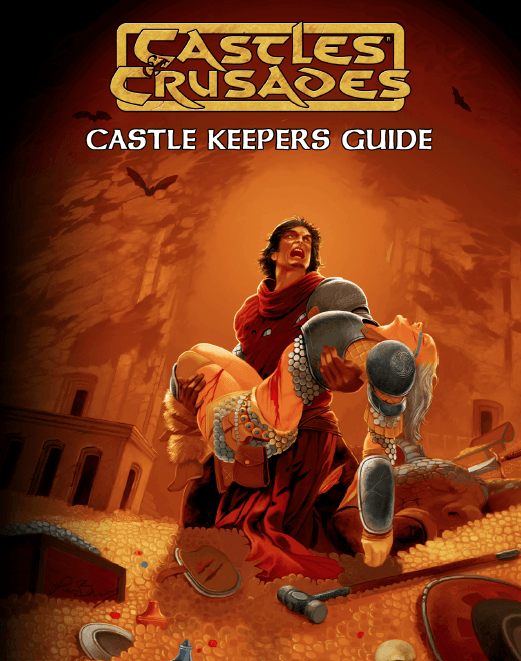
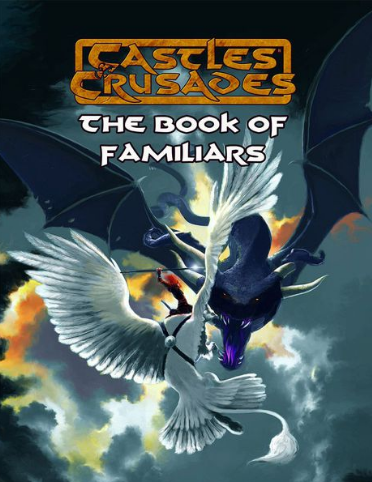
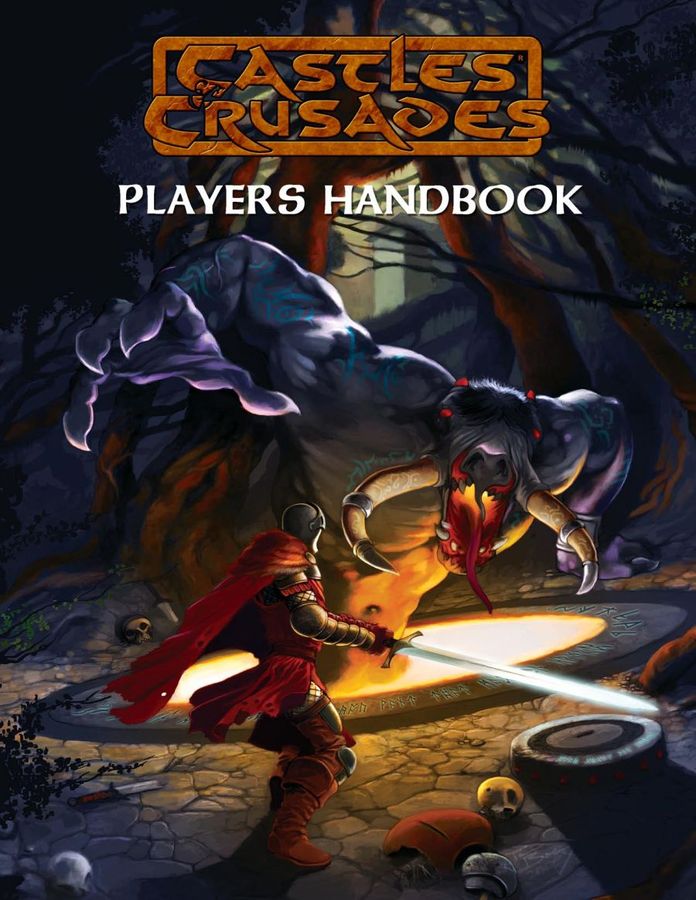


Thanks for the overview….I really love C&C and had some good fun with it; I’m thoroughly immersed in 5E right now, but your review makes me want to bring C&C out again.
I couldn’t agree more with your review.
We played C&C for 1 1/2 year, switching to D&D5 recently. After playing some evenings I allready start to think about switching back again.
C&C ist past, present and future while D&D 5e seems to be present… and nothing more.
I love it too. My next campaign will be Yggsburgh/Castle Zagyg.
I love C and C. If it wasn’t for D & D 5E and bounded accuracy I’d be playing it still. I still use the C & C stuff in my 5E campaign and recommend the CKG as a good reference for ANY frpg, especially a D & D 3.x or D20 ogl clone. TLG does good work and deserves a serious look from any old school gamer (like me).
Very good review! I was finally able to CK another session yesterday after several months of unavailability. I had two groups on hiatus and the smaller group (2 players) got together yesterday to continue the “Jack of Lies” adventure in Troll Lord Games’ “The Free City of Eskadia” book by Casey Christofferson.
C&C has been my game of choice since 2005 when none other than Mr. Gary Gygax himself steered me towards it on his Q&A thread on the EN World boards. My 3E game was suffering at that time in that I (as DM) was getting burned out. I had played from 1981-1990, first with the Moldvay 1981 D&D Basic and Expert box sets before moving onto AD&D in late 1982. 3E’s release coincided with my brother’s coming home from the USMC. He & I decided to get back into role playing gaming and brought my first wife and our younger sister into the fold (as she was too young to join us the first time around).
I finally was able to run C&C for the first time some time in early 2006. I have never looked back. I highly recommend it as it took off the shackles that 3/3.5 D&D put on DMs with the “there is a rule for everything” philosophy. Play is fast and smooth. It’s not meant to be a simulator but a fun pastime — and that’s how it delivers much like the games that it feels like did.
Way to go, Sam. An excellent review of an excellent game.
I’ve only played lightly in C&C so far but have been intrigued enough to start obtaining the basic books. (Next purchase will be Rune Lore; would love it if you’d review that).
For me, C&C represents ‘closure’ of the kick that D&D and Pathfinder have been on all the way back to the “Powers and Options” books for 2nd edition. That is: The false idol of ‘customization’. The idea that giving players the chance to customize ‘everything’ (but really, fundamentally, just their combat abilities) was a goal worthy of total prioritization.
It’s something that reached it’s ridiculous nadir with the Feats table in the Pathfinder Core Rulebook or, possibly, Player’s Handbook 3 for 4E.
Contrariwise, C&C strikes me as being totally slimmed-down, almost brutally concise. They didn’t even add a *skill* system for petessake! And I can’t fault them for it.
I suppose it also finally–and rightfully–wrenches tabletop gaming on a course quite separate from video gaming and, in so doing, re-establishes the DM as being the ‘rules’ focus with the PCs made the ‘story’ focus. As in, “Yeah guys: You will be important. But not because you are necessarily optimized combat gods but rather just because you are the protagonists. Trust me on this.”
That’s the key to C&C: The PCs have to have some trust in the DM. After years (decades really) of having a massive slate of rules designed essentially to protect them from the DM, PCs in C&C are asked to trust the DM.
Ok. You have convinced me to pick this up. I’ll just have to watch Terminator Genisys when it comes out on Redbox.
Thanks for the lengthy and detailed review, just what I was looking for. Your review has tipped me in favour of finally purchasing the 3 core books.
Please consider more detailed reviews of other new C&C products.
P.S.
Keep up the good work on the Tome Show podcast. You’re a voice of old school reason amongst the young instead there.
Had an opportunity to sit in on (2) C&C sessions at Gary.con this last March. First session 5 of 6 players were new to C&C, 2nd session 2 of 6 were new. In both cases the DM’s were excellent and the players enjoyed the sessions and picked up the base rules very quickly. The session moved along at a very good pace. I am working on introducing a C&C game session to our weekly group this winter. Currently we are enjoying a well run Savage Worlds campaign.
I also love C&C. Along with D&D 5e, it is my favorite system. Recently, our CK could not make it to game night and we played PF. Not to knock PF…I actually really like the game…but it served to remind me how easy and smooth C&C runs compared to 3.5/3.75. I am loving my current gaming group and we major in C&C, for the most part.
This was a wonderful essay. A real joy to read, and perfectly describes the system’s history, and its workings. I’m pointing my site visitors to it in an upcoming blog post.
Nicely done.
Thanks for the detailed review. Sounds intriguing but really just convinced me to keep playing 1st edition AD&D with a few house rules from Hackmaster. I don’t see the need in invest in a whole new set of rule books & supplements at this point. And I totally agree. It was the ridiculous number of rules, feats, etc., that turned me off of later editions of D&D. They just seemed to be all about ramping characters up to be unbeatable with an action/die roll for everything. I briefly tried Pathfinder but found it just as annoying. So I just went back to good old first edition.
Totally understand! When I started to get into C&C it was out of curiosity regarding the differences between 1e, 3e, and C&C. The I found a group of new players I was introducing to RPGs… long story short, they wanted something currently in print. I tried to convince them that 1e was perfect for the kind of game they were asking for, but in the end they chose C&C. Some of the nuances are different, but the systems are very close, depending on your focus. Either way, whether you stick with 1e or try C&C, you can’t go wrong!
Thanks for reading my review, and even if it convinced you to stay with 1e and not invest in C&C, I think it did its job.
Thanks for a nice review of C&C. I enjoyed reading this immensely and agree with you on all points. Despite having owned C&C for a few years, I haven’t gotten to run any games with it until recently, and I just love how easy and fun it is to GM.
:)
*Casts Raise old thread spell*
Great review, I have been struggling with the whole 5e super characters for awhile and wanted to get back into something that is inprint but feels old school while easy to play. C&C is it .
Thanks for your review
Rick
Great summary. I’m also a fan of C&C for it’s smooth yet flexible approach.
Might be worth doing a slight update, TLG has rights to rerelease some of the Gygax IP. Latest kickstarters are looking pretty successful for it too.